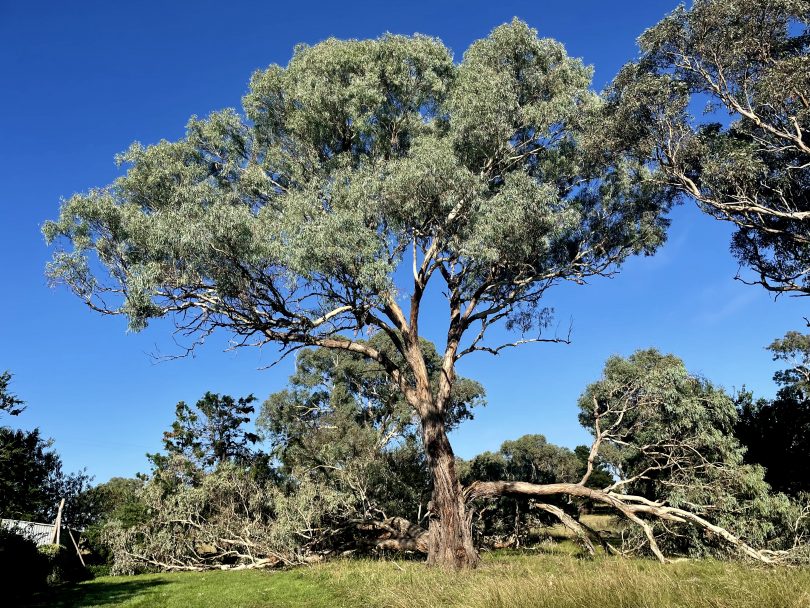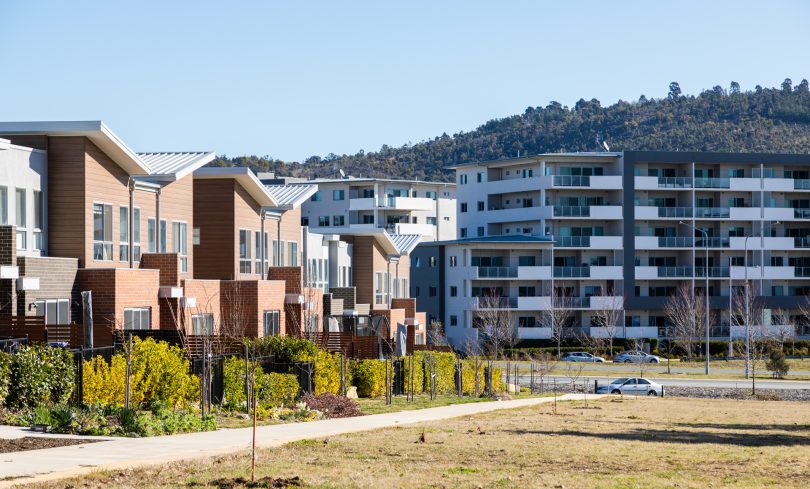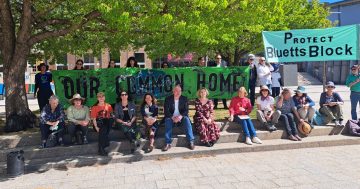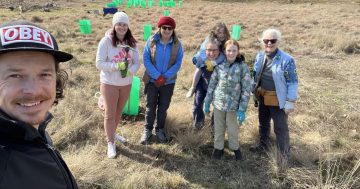
Mature trees like this must be protected and it’s not enough to let developers simply plant new ones. Photo: Sally Hopman.
The ACT Government’s draft action plan for protecting mature native trees has been welcomed, but the former Conservation Council head has called on the government to take it further.
Minister for the Environment Rebecca Vassarotti released a draft of the government’s Action Plan to Prevent the Loss of Mature Native Trees at the end of last month, noting there had been a “continuing decline in the number of mature native trees over the last two centuries, in particular in urban areas, due to land clearing, loss of connectivity and climate change”.
The ACT lost just over six per cent of its mature urban trees between 2015 and 2020, primarily due to land clearing.
That’s around 4200 mature trees a year, with the developing suburbs of Coombs, Denman Prospect, Throsby, Taylor, Wright and Whitlam suffering the largest percentage of losses per suburb.
Ms Vassarotti noted the priority of the plan was protecting mature native trees, particularly when new suburbs and estates are developed.
Another aspect will be ensuring younger trees can reach maturity in the first place.
“The Action Plan outlines proposed actions to prevent further loss across the Territory, including educating private developers and leasehold landowners of the importance of maintaining mature native trees in the landscape,” Ms Vassarotti said.
But for the former executive director of the ACT Conservation Council Larry O’Loughlin, it’s a case of ensuring some action follows these words.
After all, the track record – as evidenced above – hasn’t been great when it comes to protecting trees as new suburbs are built, especially in cases where developers apply to remove trees on the condition they will replace them elsewhere.
“We really need to say to the planners … they have to look after the trees because if we lose our mature native trees, we don’t get them back for at least a hundred years,” he said.
Alongside greater powers to direct planners and developers on what to do with land, Mr O’Loughlin said he would have hoped to see stronger language included in the action plan.
For example, using the word ‘must’ instead of ‘should’ in its proposed actions.

Lots of trees were lost in the development of new suburbs like Coombs, Wright, Denman Prospect and Taylor. Photo: Michelle Kroll.
He’s also concerned that it’s taken three years to develop the draft since the issue of mature native tree loss was first flagged as a threat.
And while the ACT Government is simultaneously looking to boost the Territory’s tree canopy to 30 per cent, with at least 54,000 trees to be planted by 2023/24 thanks to a $14.5 million budget promise, Mr O’Loughlin said the suggestion that mature trees could be replaced with new trees was incorrect.
“They are also not planting the same sorts of trees in any case so we aren’t getting that recruitment,” he said.
Canberra’s tree canopy cover was estimated to be around 22.5 per cent in 2020.
“There’s this really strong chance that we will lose all mature native trees in the urban environment in around 150 years – in a worst-case scenario,” Mr O’Loughlin lamented.
There are predictions that hollow-bearing or large mature native trees may decline by 87 per cent over three hundred years if existing management practices are not changed.
In 150 years, the new trees the government is currently planting might be classified as mature, Mr O’Loughlin said, but they will be different, effectively changing Canberra’s environment.
“The wonderful woodland birds we have now can travel across the city because they have places to land and nest and eat something and move on. They are stepping stones. If we lose the trees, we lose that, too,” he explained.
However, the ACT Government is making other changes in this area, one of which is a variation to the Territory plan that will mean residential developments require more trees, planting areas and soft landscaping.
Draft variation 369 will revise the amount of tree cover required in multi-unit developments from 15 per cent to 20 per cent, among other changes.
The Action Plan to Prevent the Loss of Mature Native Trees is open for consultation until 27 May.















